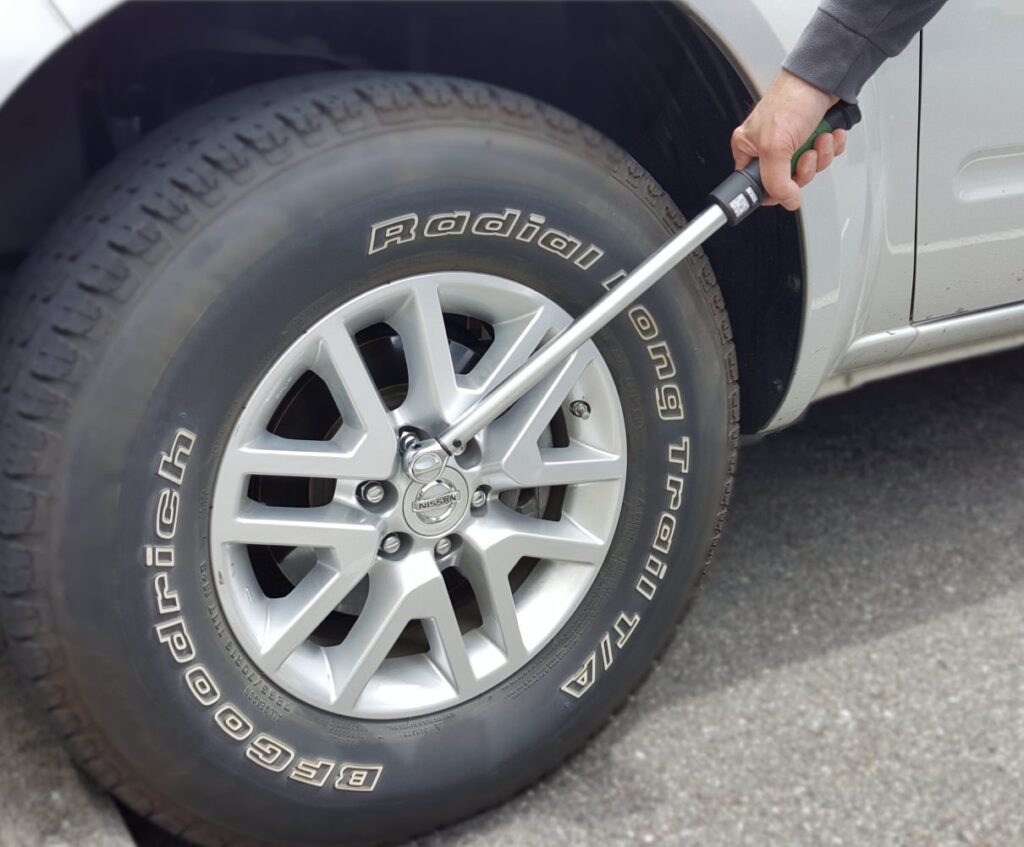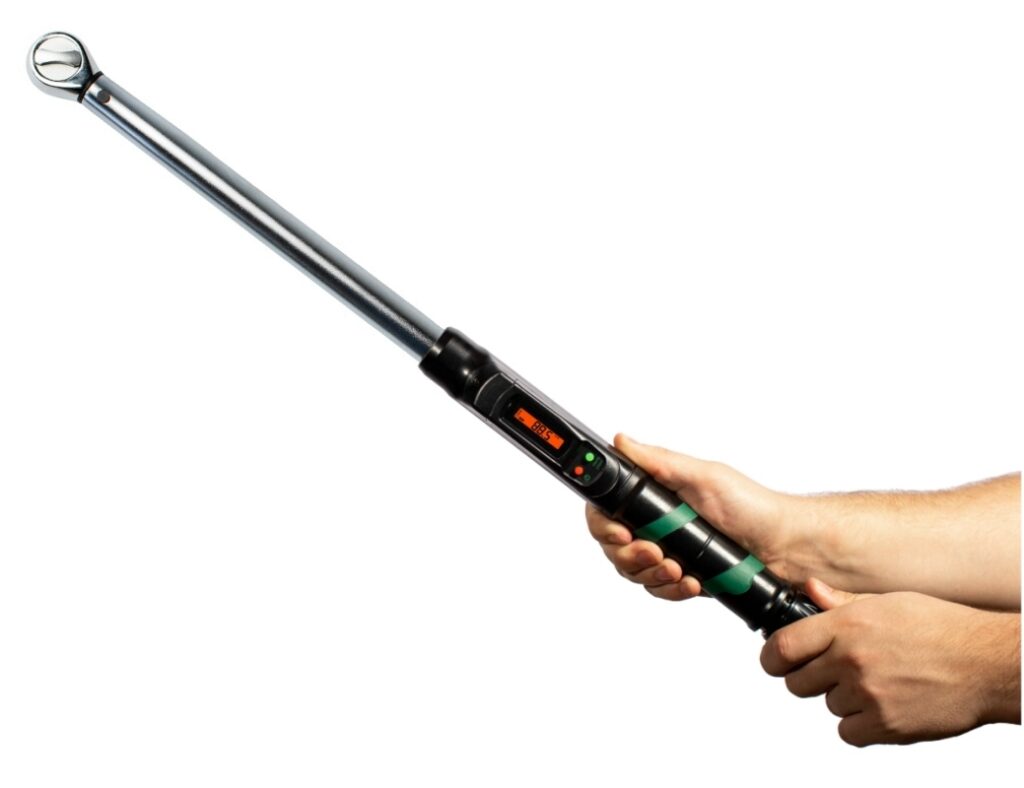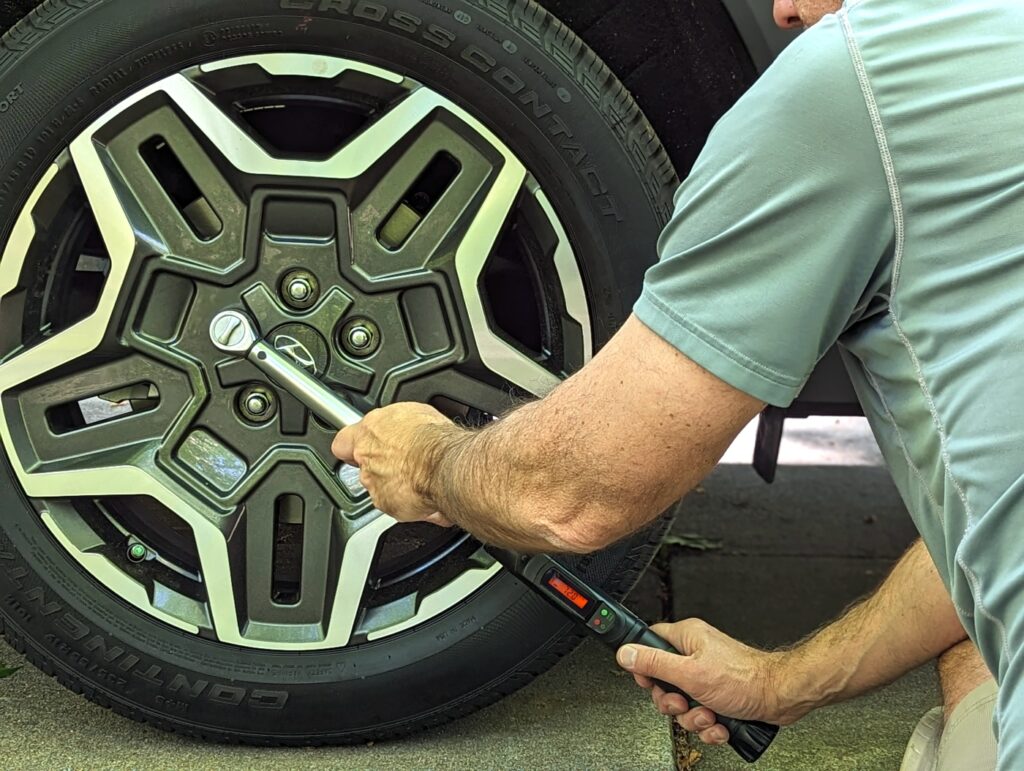Ever wondered how a mechanic achieves that perfect tightness on a bolt without snapping it or leaving it loose? The secret weapon in their arsenal is the torque wrench, a precision tool that ensures fasteners are tightened to a specific force, preventing damage and ensuring proper function. It is crucial for tasks where proper tightness is required to ensure the assembly’s safety and operational integrity.
But how does a torque wrench work? This guide dives deep into the world of torque wrenches, explaining the mechanics of how they operate, their various types, and how to choose the right one for your needs.
How Does a Torque Wrench Work?
A torque wrench measures and applies a specific amount of torque to a fastener. Torque, measured in pound-feet (ft-lb) or newton meters (Nm), represents the twisting force applied to a fastener.
Many inexperienced individuals working with fasteners mistakenly believe that applying excessive torque will prevent loosening. However, this often leads to the opposite effect, damaging the fastener instead of securing it. Over-tightening can actually strip threads, snap heads, and compromise the overall integrity of the fastener assembly. On the other end of the spectrum, under-tightening can lead to dangerous leaks or loose components. Torque wrenches ensure the precise application of this twisting force.
There are three main types of torque wrenches: click, digital, and split beam. We’ll explore the inner workings of each in more detail in the sections below, but here’s a quick overview:
- Click-Type Torque Wrenches: Known for their audible click when the preset torque is reached. Ideal for most automotive and mechanical applications.
- Digital Torque Wrenches: Feature an LCD display for reading torque values, offering high precision. Suitable for applications requiring detailed documentation.
- Split Beam Torque Wrenches: Known for their robust design and accuracy, they are less prone to needing recalibration and excellent for heavy-duty use.
What is a Torque Wrench Used For?
Imagine a car engine – every bolt plays a crucial role in holding components together. Overtightening the crankcase bolts, for example, can warp the casing, while under-tightening the spark plugs can lead to misfires. Torque wrenches ensure each bolt receives the precise force needed for optimal performance and safety.
However, their applications extend far beyond automotive repair. From delicate electronics assembly to bicycle maintenance, torque wrenches guarantee precise fastening across various industries and settings:
- Automotive: Ensuring lug nuts are properly tightened to manufacturer specifications.
- Aerospace: Applying precise torque to aircraft components to ensure flight safety.
- Construction: Ensuring structural bolts are tightened correctly to maintain the integrity of buildings and infrastructure.
- Home DIY Projects: Assembling furniture or repairing appliances with the correct torque to avoid damage.

How Does a Click Torque Wrench Work?
The click-type torque wrench is the most common type of torque wrench and a fundamental tool in mechanical work, valued for its straightforward and effective design. Here’s a deeper look into its mechanics:
- Internal Spring Mechanism: At the core of a click-type torque wrench is a calibrated spring. As you adjust the torque setting, this spring compresses to a predetermined tension according to the scale marked on the wrench handle.
- Locking Mechanism Interaction: This spring is coupled with a locking mechanism that secures the wrench’s head. As torque is applied, this mechanism holds the setting steady until the desired torque level is reached.
- Operational Dynamics: During use, you apply force to the wrench handle, causing it to twist. As you approach the set torque level, the increasing force overcomes the spring’s resistance.
- Audible Click Indicator: The defining feature of the click torque wrench is the audible click sound it makes once the preset torque is reached. This click signals that you should stop applying force, as the required torque has been accurately met.
This mechanism ensures simplicity and reliability, making the click torque wrench a popular choice among both professionals and hobbyists. Its tactile feedback system—signaled by the click—provides a clear indication when the torque setting is achieved, preventing over-tightening and ensuring consistent bolt tensioning across various applications.
Want to learn even more about using a click-type torque wrench? Check out our detailed blog post on how to use a torque wrench for more practical application tips.
How Does a Digital Torque Wrench Work?
For a more high-tech approach, eTORK offers torque wrenches with a digital display showing the set torque. These wrenches function the same as click wrenches internally but with a digital display.

How Does a Split Beam Torque Wrench Work?
Offering a visual indication of torque application, the split beam wrench features a double-beam design. As you turn the handle, the deflection of the split beam indicates how much torque is being applied.
These wrenches are often easier to read at a glance but may require some practice to interpret the deflection accurately.
Benefits of Click-Style Torque Wrenches
Click-style torque wrenches offer several advantages:
- Simple and Reliable: The click mechanism provides a clear and audible indication of reaching the target torque, making them easy to use for both professionals and DIY enthusiasts.
- Durable: With fewer moving parts compared to other types, click wrenches are known for their durability and long lifespan.
- Cost-Effective: Generally more affordable than other options, click-style wrenches offer excellent value for the price.
- Tactile Feedback: The satisfying click provides clear indication that you’ve reached your desired tightness.
While other types of torque wrenches have their place, click-style wrenches remain a popular and dependable choice for a wide range of applications.
Find the Perfect Click-Style Torque Wrench with eTORK!
When choosing a click-style torque wrench, consider the following factors:
- Capacity: The wrench’s maximum torque rating should exceed the torque requirements of your intended use. eTORK offers a wide range of click-style wrenches to suit various needs.
- Drive Size: The drive size refers to the square socket that attaches the wrench to the fastener. Common sizes include ¼-inch, ⅜-inch, and ½-inch. Choose the size that matches the most common fasteners you’ll be working with.
- Features: Some click-style wrenches offer additional features like reversible ratcheting mechanisms for easier tightening in tight spaces.
eTORK click-type torque wrenches are renowned for their accuracy, durability, and user-friendliness. They are built to last and come with exceptional customer support to ensure you have the right tool for the job. Explore our selection of click-style torque wrenches and find the perfect one to unleash the power of precision with your next project!




